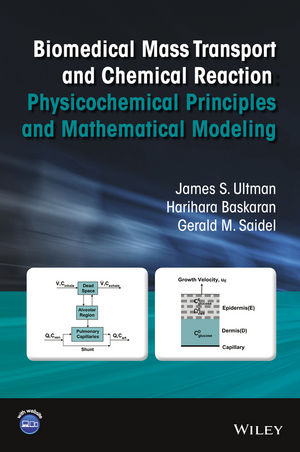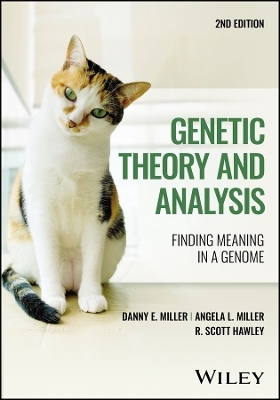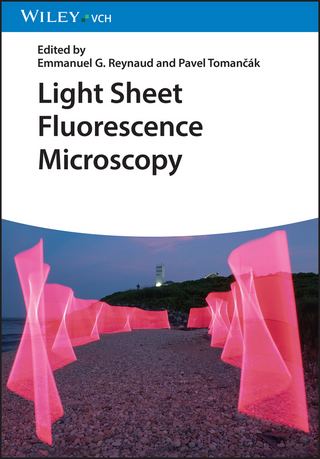
Biomedical Mass Transport and Chemical Reaction
Wiley-Blackwell (an imprint of John Wiley & Sons Ltd) (Verlag)
978-0-471-65632-6 (ISBN)
Teaches the fundamentals of mass transport with a unique approach emphasizing engineering principles in a biomedical environment * Includes a basic review of physiology, chemical thermodynamics, chemical kinetics, mass transport, fluid mechanics and relevant mathematical methods * Teaches engineering principles and mathematical modelling useful in the broad range of problems that students will encounter in their academic programs as well as later on in their careers * Illustrates principles with examples taken from physiology and medicine or with design problems involving biomedical devices * Stresses the simplification of problem formulations based on key geometric and functional features that permit practical analyses of biomedical applications * Offers a web site of homework problems associated with each chapter and solutions available to instructors Homework problems related to each chapter are available from a supplementary website (
James S. Ultman, PhD, is a Professor Emeritus of Chemical Engineering and Biomedical Engineering at the Pennsylvania State University. Harihara Baskaran, PhD, is a Professor of Chemical and Biomolecular Engineering at Case Western Reserve University. Gerald M. Saidel, PhD, is a Professor of Biomedical Engineering at Case Western Reserve University.
Preface xvi Guidance to Instructors xvii Methods for Solving Model Equations xix Acknowledgments xx About the Companion Website xxi Part I Introduction 1 1 Biological Structure and Function 3 1.1 Cell Energy Related to Whole-Body Function 4 1.2 Tissue and Organ Systems 8 1.3 Cell Structure and Energy Metabolism 16 2 Modeling Concepts for Biological Mass Transport 21 2.1 Representation of Biological Media 21 2.2 Mechanisms of Mass Transport 25 2.3 Formulation of Material Balances 30 2.4 Spatially Lumped and Distributed Models 32 References 39 Part II Thermodynamics of Biomedical Processes 41 3 Basics of Equilibrium Thermodynamics 43 3.1 Thermodynamic Systems and States 43 3.2 Heat, Work, and the First Law 44 3.3 Enthalpy and Heat Effects 45 3.4 Entropy and the Second Law 46 3.5 Gibbs Free Energy and Equilibrium 46 3.6 Properties of the Chemical Potential 51 References 53 4 Interfacial and Membrane Equilibria 54 4.1 Equilibrium Criterion 54 4.2 Interfacial Equilibria 56 4.3 Membrane Equilibria 62 4.4 Electrical Double Layer 71 References 75 5 Chemical Reaction Equilibrium 76 5.1 Equilibrium Criterion 76 5.2 Equilibrium Coefficients 78 5.3 Acid Dissociation 80 5.4 Ligand Receptor Binding 83 5.5 Equilibrium Models of Blood Gas Content 90 References 101 Part III Fundamentals of Rate Processes 103 6 Nonequilibrium Thermodynamics and Transport Rates 105 6.1 Transport Velocities and Fluxes 105 6.2 Stefan Maxwell Equation 109 6.3 Diffusion of Uncharged Substances 111 6.4 Diffusion of Electrolytes 116 6.5 Transport across Membranes 117 References 123 7 Mechanisms and Models of Diffusion 124 7.1 Transport Rates in Homogeneous Materials 125 7.2 Diffusion Coefficients in Gases 125 7.3 Diffusion Coefficients in Liquids 128 7.4 Transport in Porous Media Models of Tissue 134 7.5 Transport in Suspension Models of Tissue 144 References 151 8 Chemical Reaction Rates 152 8.1 General Kinetic Models 152 8.2 Basis of Reaction Rate Equations 154 8.3 Multi-Step Reactions 158 8.4 Ligand Receptor Kinetics 161 8.5 Enzyme Kinetics 166 8.6 Urea Cycle as a Reaction Network 173 References 178 Part IV Transport Models in Fluids and Membranes 179 9 Unidirectional Transport 181 9.1 Unidirectional Transport Equations 181 9.2 Steady-State Diffusion 186 9.3 Diffusion with Parallel Convection 191 9.4 Diffusion with Chemical Reaction 194 9.5 Unsteady-State Diffusion 201 References 203 10 Membrane Transport I: Convection and Diffusion Processes 204 10.1 Ordinary Diffusion 204 10.2 Diffusion with Parallel Convection 211 10.3 Cell Membrane Channels 216 References 223 11 Membrane Transport II: Carrier-Mediated Processes 224 11.1 Facilitated Transport of a Single Substance 224 11.2 Cotransport of Two Substrates 227 11.3 Simulation of Tracer Experiments 230 11.4 Primary Active Transport 237 11.5 Electrical Effects on Ion Transport 242 References 244 12 Mass Transfer Coefficients and Chemical Separation Devices 245 12.1 Transport Through a Single Phase 245 12.2 Transport Through Multiple Phases 256 12.3 Design and Performance of Separation Devices 265 References 279 Part V Multidimensional Processes of Molecules and Cells 281 13 Fluid Mechanics I: Basic Concepts 283 13.2 Mechanical Properties and Rheology of Fluids 289 13.3 Model Formulation and Scaling of Fluid Flow 293 13.4 Steady Flow Through A Tube 299 References 306 14 Fluid Mechanics II: Complex Flows 307 14.1 Boundary Layer Flows 307 14.2 Creeping Flow Through a Leaky Tube 319 14.3 Periodic Flow Along a Tube 323 Reference 329 15 Mass Transport I: Basic Concepts and Nonreacting Systems 330 15.1 Three-Dimensional Mass Balances 330 15.2 Special Cases 332 15.3 One-Dimensional Transport Equations 334 15.4 Model Formulation and Scaling of Mass Transport 339 15.5 Diffusion and Convection in Nonreacting Systems 344 References 357 16 Mass Transport II: Chemical Reacting Systems 358 16.1 Single-Phase Processes 358 16.2 Multiphase Processes 368 16.3 Processes with Interfacial Reaction 380 References 387 17 Cell Population Dynamics 388 17.1 Cell Number Balances 388 17.2 Cell Transport and Fate Processes 389 17.3 Single Cell Population Dynamics 394 17.4 Multiple Cell Population Dynamics 399 Reference 409 Part VI Compartmental Modeling 411 18 Compartment Models I: Basic Concepts and Tracer Analysis 413 18.1 Compartmental Modeling Concepts 413 18.2 Multiple-Compartment Models 421 18.3 Nonideal Inputs and Moment Analysis 430 Reference 438 19 Compartment Models II: Analysis of Physiological Systems 439 19.1 Open-Loop Models 439 19.1.1 Multipool Model of Glucose Metabolism 439 19.2 Models with Feedback and Recirculation 452 References 466 Part VII Advanced Biomedical Applications 467 20 Therapies for Tissue and Organ Dysfunction 469 20.1 Dynamics of Urea Clearance in a Patient During Hemodialysis 469 20.2 Hemodialyzer Performance with Varying Filtration 474 20.3 Gas Exchange in an Intravascular Lung Device 480 20.4 Separation of Blood Components by Apheresis 486 20.5 Epidermal Regeneration in Tissue-Engineered Skin 490 References 497 21 Drug Release, Delivery, and Distribution 498 21.1 Drug Release From an Agglomerated Tablet 498 21.2 Drug Release From an Osmotic Pump Device 504 21.3 Intestinal Drug Transport 509 21.4 Drug Distribution in Ablated Tissues 515 21.5 Intracranial Drug Delivery and Distribution 520 21.6 Whole-Body Methotrexate Distribution 526 References 534 22 Diagnostics and Sensing 535 22.1 Chemical Monitoring of Tissue by Microdialysis 535 22.2 Dual-Electrode Measurement of Blood Flow and Oxygen 541 22.3 Detection of Ethanol in Blood from Exhaled Gas 546 22.4 Oxygen Uptake and Utilization in Exercising Muscle 552 22.5 Tracer Analysis with Pet Imaging 562 22.6 Cancer Cell Migration with Cell Cell Interaction 569 References 576 Appendix A Units and Property Data 577 A.1 American National Standard for SI Units 577 A.2 Definitions of Concentration 579 A.3 Thermodynamic Properties 580 A.4 Transport Properties 583 References 586 Appendix B Representing Transport Processes in Complex Systems 587 B.1 Vector and Tensor Operations 587 B.2 Nonequilibrium Thermodynamics 592 B.3 Spatially Averaged Balances for Heterogeneous Tissue 596 B.4 Tables for Fluid Motion in Common Coordinate Systems 602 References 604 Appendix C Mathematical Methods 605 C.1 Dimensionless Forms and Scaling 605 C.2 Inversion of Square Matrices 608 C.3 Initial-value Problems 609 C.4 Laplace Transforms 613 C.5 Alternative Representation of a Point Source 614 C.6 Similarity Transform of a Partial Differential Equation 615 Nomenclature 619 Index 624
| Verlagsort | Chicester |
|---|---|
| Sprache | englisch |
| Maße | 181 x 259 mm |
| Gewicht | 1276 g |
| Themenwelt | Medizin / Pharmazie ► Medizinische Fachgebiete ► Biomedizin |
| Medizin / Pharmazie ► Physiotherapie / Ergotherapie ► Orthopädie | |
| Technik ► Medizintechnik | |
| ISBN-10 | 0-471-65632-1 / 0471656321 |
| ISBN-13 | 978-0-471-65632-6 / 9780471656326 |
| Zustand | Neuware |
| Haben Sie eine Frage zum Produkt? |
aus dem Bereich


